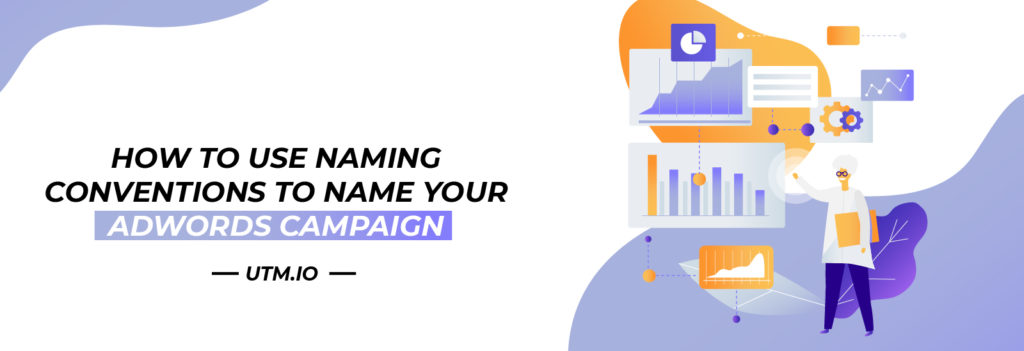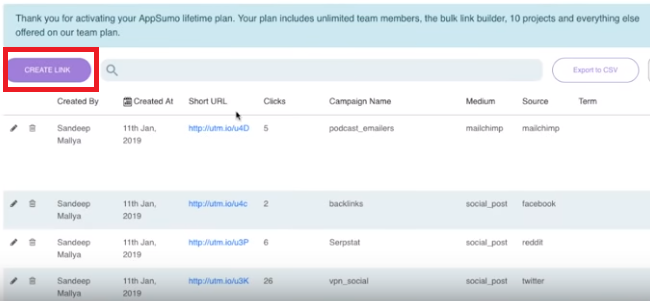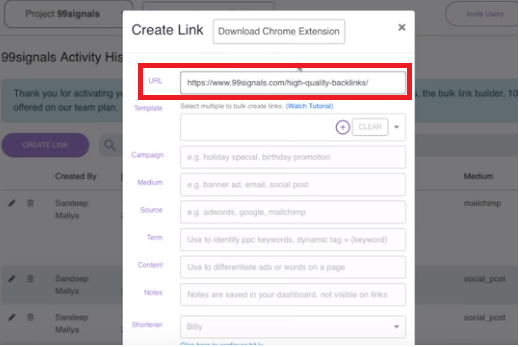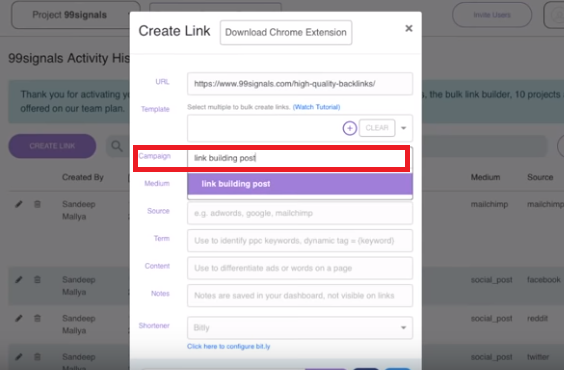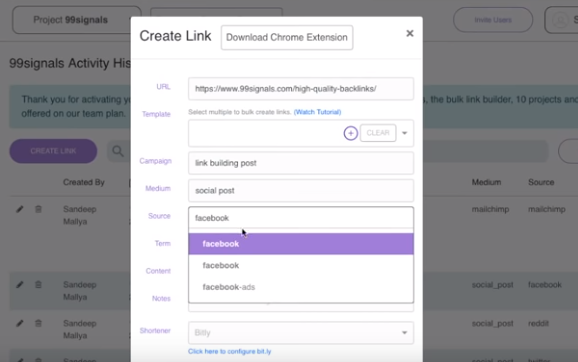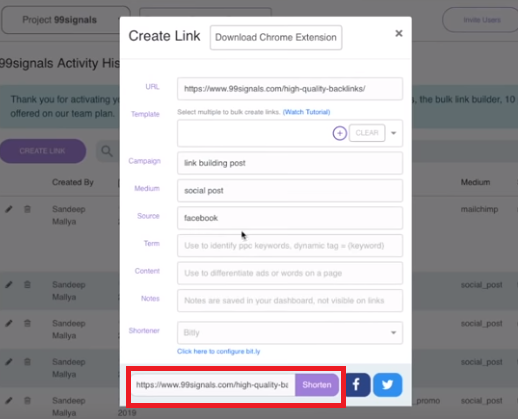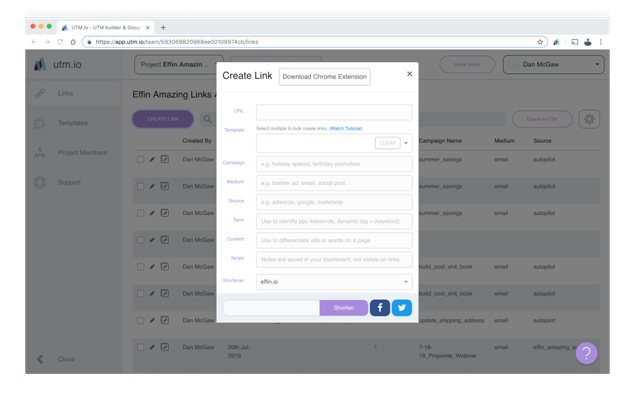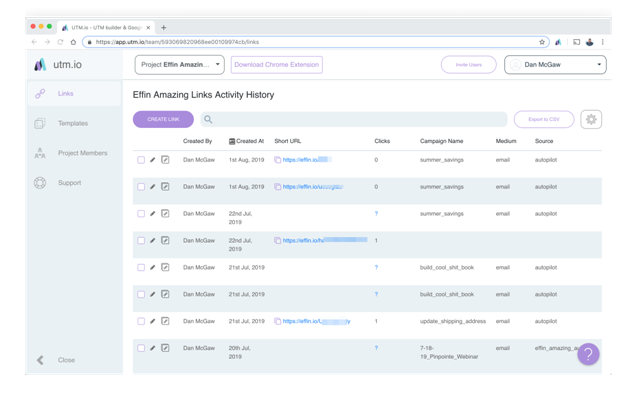Even though you’ve run hundreds of successful ads during your career, marketers still struggle to manage all of their campaigns. You’re often so busy with other aspects like copy and creative that the campaign naming schema becomes an afterthought. Then when you’re ready analyze results, you have a hard time recalling how the campaigns were set up, which products were promoted, and what you targeted.
That’s why it’s crucial to set up a consistent schema. By leveraging the Adwords’ naming convention, you’ll build more intuitive campaign names that you and your team can understand. Keep your entire time on the same page and spend less time guessing the details of each campaign.
In this post, you’ll discover how to name your campaigns and understand how using this schema can help you stay more organized
Why You Should Follow Adwords Campaign Naming Conventions
Before you learn how to use these Adwords campaign naming conventions, you need to first understand why you should use them in the first place. Why are they so important and why should you spend your time figuring them out?
It’s common for marketers to come up with campaign names out of the blue while the campaign is in development. So they would come up with names that make sense to them at that moment.
But after a while and several other campaigns later, they may no longer be able to decipher it. It can get confusing trying to figure out what “campaign #1” means or which year your “Halloween campaign” was.
Plus, there’s also the fact that you have to come up with a creative campaign name every time. That’s exactly why it’s important to follow a process when naming your ad campaigns.
If you follow Adwords campaign naming conventions, it becomes much easier to come up with campaign names. And since you followed a specific and consistent process, the names are easier to keep track of.
Let’s take a look at the top benefits of following adwords campaign naming conventions:
#1: Better Overview of Your Campaign Performance
When you follow Adwords campaign naming conventions, it means all your campaigns will have the same naming structure. This makes it much easier to get an overview of your campaign performance and spot trends that can inform your campaigns.
It’ll be easier to tell how one product category performs on different channels, so you know which channels to focus on for other campaigns.
#2: Faster Campaign Analysis
It’s much easier to find the necessary data during ad hoc analysis when your campaigns have an organized naming structure.
So instead of spending too much time picking out the right data to use, you can focus more on the analysis aspect of the process. This frees up a lot of time to work on other important tasks.
#3: Better Control and Organization
Unless you have a consistent naming process for your campaigns, your ad accounts will become more challenging to manage as you run more and more campaigns.
With a proper naming Adwords campaign naming convention and a hierarchical variable arrangement, your data becomes easier to organize and process. So you’ll have more control over your ad accounts.
#4: Easy Data Filtering
One of the top benefits of using Adwords campaign naming conventions is the ability to easily filter your data by variable. You just need to enter the variable name in the search field of your ad platform to access all the data relevant to that variable. This makes it a lot easier to find the most relevant data for your analysis.
For instance, if you want to look at all of the campaigns you ran globally, you just need to type in the variable “global” to find the right data. Similarly, you can filter all the campaigns you ran for one specific product or one specific brand and so on.
#5: Improves Shareability
When your campaign names do not follow a proper naming structure, it can be very difficult for other people to interpret it. This is especially challenging when you have multiple people working on the same account as you’ll often find yourself explaining the same thing over and over again.
So it’s crucial to follow a specific Adwords campaign naming convention to make your data easier to share and understand for everyone who needs it. That way, you can ensure that the clients you work with can easily understand your reports and share them within their organization.
For companies that work with marketing agencies, having a proper naming convention in place will ensure better communication between internal and external teams. Plus, it will make the transition easier even if you switch to another agency.
Following the proper Adwords campaign naming conventions will also improve internal communications within your agency. If you have to share your ad performance reports with different teams, a proper naming convention ensures that you spend less time explaining your reports.
Common Variables to Use in Your Campaign Name
There are plenty of variables you can include in your campaign depending on whom you’re targeting and what campaign structure you have. In general, Adwords campaign naming conventions have two categories of naming conventions depending on the insight you can gain from them.
You have product variables, which, as the name suggests, give you information specific to your products such as brand, product name, category, etc. Targeting variables are the variables that give you insights into your audience and your targeting choices. This could include variables like geolocation, placement, ad type, etc.
To better understand how you can use Adwords campaign naming conventions in your campaigns, let’s find out the most common variables you can include in your campaign name:
#1: Location
You’ll need to include a location variable if you’re targeting multiple geolocations in your campaign. This variable helps you compare how your campaigns for the same product are performing in different locations.
So in case a certain campaign is underperforming, you could look for opportunities to make improvements. Or you could also discover where your brand seems to get the best response and focus your effort on that location in the future.
Your location variable will be the abbreviation of each location name. For example, if you’re running a campaign targeting certain states, you’ll be using the state abbreviations as your location variable. This means CA for California, NY for New York, and so on.
So your campaign name will start with:
[Location]
#2: Traffic Source
Using proper Adwords campaign naming conventions can help you figure out the most profitable advertising channels for your brand. This way, you can have a better idea of which channels are worth investing in for your future campaigns. You can also use these insights to make improvements to your ad if it’s underperforming in some channels.
This makes it crucial to include a traffic source variable in your campaign name if you’re running ads on multiple channels. For example, let’s say you’re running campaigns on Facebook and LinkedIn. If you have a separate campaign name for each of these channels, you can find out which channel is more profitable for your brand.
[Location]-[Traffic source]
#3: Brand
If you sell products from different brands, you’ll also need to create brand-specific campaigns. This means you need a brand variable that will help you understand how the campaign for each brand is performing.
For instance, let’s say you sell clothing from different designer brands including Calvin Klein, Michael Kors, and DKNY. If you run different ad campaigns to promote these brands, you will need to use a brand variable to name each campaign.
You can then use these variables to keep track of how your target audience is responding to each brand so you know which one they favor the most. Then you can use those insights to optimize your campaigns and ad creative.
For instance, if you find that your Calvin Klein ads are yielding the most results, you could highlight the brand in your marketing copy for other channels.
[Location]-[Traffic source]-[Brand]
#4: Category and Subcategory
The proper Adwords campaign naming conventions also requires companies selling multiple types of products to include product category in their campaign name.
For example, you could have a campaign promoting activewear, a campaign promoting formals, and a campaign promoting evening wear.
You can further break this down into subcategories, if and when relevant. For example, under the “formals” category, you may have a campaign promoting formal shirts and a campaign promoting formal trousers.
This will help you understand what kind of products your target audience seems to like the most so you can focus on them for your future campaigns.
[Location]-[Traffic source]-[Brand]-[Category]-[Subcategory]
#5: Ad Type
You should also include the ad type variable in your campaign name so you can easily identify which types of ads are delivering the best results.
You may be utilizing several types of ads available on Google Adwords – whether it’s display ads, search ads, Google Shopping ads, or even remarketing ads. Find out which ad types are most profitable for your business.
This is a great way to narrow down on the ad types that are worth investing in and the ones that aren’t yielding the best result.
If you find that a certain ad type is hardly driving clicks, maybe you’ll want to make a few improvements to your ad creative and give it another test run. If it’s still not delivering, you may want to exclude that in your future campaigns.
[Location]-[Traffic source]-[Brand]-[Category]-[Subcategory]-[Ad type]
#6: Objective
Your campaigns won’t always share the same objective so you can’t measure their performance using the same metrics.
That’s why it’s crucial to follow proper Adwords campaign naming conventions and include an objective variable in your campaign name. This will make it much easier to identify which metrics to use to measure the performance of a certain campaign.
For instance, let’s say you’re running two different campaigns with separate objectives. The first campaign is to drive brand awareness and your objective is to get more Facebook likes.
The second campaign is a remarketing campaign to target people who have interacted with your first ad. So your objective is to drive signups.
For the first campaign, you’ll need to include “Facebook-likes” in your campaign name as the objective variable. In the second campaign, you’ll include “signups” as an objective variable when naming your campaign.
[Location]-[Traffic source]-[Brand]-[Category]-[Subcategory]-[Ad type]-[Objective]
So using these essential variables, let’s say you’re running a Facebook ad campaign in the U.K for the latest Calvin Klein Marvin sneakers and your objective is to drive clicks. Your campaign name would look something like this:
[UK]-[Facebook]-[CK]-[Sneakers]-[Marvin]-[Social PPC ads]-[Clicks]
These six variables are typically the basics you would need to include to follow proper Adwords campaign naming conventions, although there may be a few variations for each campaign. Besides these, there are a few other variables that advertisers might use depending on their campaign such as publisher name, product margin, etc.
#7: Publisher
Some businesses may run display ads through multiple publishers. So to accurately measure how each of these campaigns are performing, proper Adwords campaign naming conventions require the addition of a publisher variable in their campaign name.
This will give you a clear picture of how ads on a specific publisher site compares to ads on another publisher site.
You can even use these insights to find out which types of audience resonate with your ads the most. For example, your Forbes ad may be performing much better than your Facebook ads.
This means the kind of people who read Forbes articles are more relevant to your products or services. This will be very useful when identifying your target audience for future campaigns.
#8: Audience
If you’re targeting different audience groups or interest groups for your campaigns, you’ll need to set up your Adwords campaign naming conventions accordingly. So you’ll need to include an audience or targeting variable in your campaign name.
For example, maybe you’re remarketing to your existing customers so you’ll include “previous buyers” in your campaign name.
Or if you’re targeting people who hold a certain job position, you’ll need to include their position in your campaign name. The same goes for specific audience demographics and other audience characteristics.
This way, you’ll be able to identify the most profitable audience groups and target them in your future campaigns for increased returns.
#9: Sale/Promotion
You may run ad campaigns for a special occasion that involves a sale or promotion. Adwords campaign naming conventions require that you include a sale or promotion variable for these occasions.
So your campaign name will have something like “Halloween 2019” or “Christmas Sale 2019” depending on the promotion and occasion.
#10: Product Details
In some cases, brands might want to get more in depth with their campaign tracking. They might want to find out which specific products are getting the most audience attention. This is a great way to conduct audience and product research and inform their product enhancement efforts.
So they would need to include a product details variable in their campaign name. For instance, they could create separate campaigns for different materials of the same product. Similarly, they could create separate campaigns for different sizes, colors, and designs of the same product.
#11: Margin
You might even want to group together products with similar margins in your campaign for your Adwords campaign naming conventions. For this, you’ll need to include a margin variable in your campaign name. Group together high margin products under the same campaign, and run a separate campaign for low margin products.
This will give you an accurate look at how much return you’re getting from products with different margins. You can then understand whether your investments are worth it and whether to continue with your campaigns.
You can then put these variables together in order of their importance and relevance to your business to create your own Adwords campaign naming convention. Clearly define the rules and order of arrangement for these variables so everyone involved in your campaigns know what conventions to follow.
Getting Organized with UTM Tagging
Tagging your URLs with all these variables will give you an accurate picture of your campaign performance and ROI. However, the process of tagging your links can be time-consuming especially if you’re doing it manually. It’s even more challenging when you have to follow your established Adwords campaign naming conventions to keep things organized.
While Adwords can automatically tag your links with relevant UTM parameters, most ad platforms do not have the same functionality. That’s where UTM builders like UTM.io enter the picture.
This tool makes it a lot easier to keep your campaigns organized and create UTM links in just a few steps. You just need to enter the desired variables in the relevant fields and the tool will automatically create a UTM link for you.
Let’s take a closer look at the step-by-step process for using UTM.io to create URLs with relevant UTM parameters.
Step 1: Click on the “Create Link” button at the top left hand corner of the dashboard.
Step 2: Paste the URL you want to track under the “URL” section at the top.
Step 3: Add the campaign name that you have created.
Step 4: Add the medium that you’re tracking.
Step 5: Enter the source of traffic that you want to track. This will be similar to the traffic source mentioned earlier.
You can further use the “Term” and “Content” fields depending on what you’re tracking. As you fill out these fields, the tool will automatically generate a URL with the relevant parameters at the bottom of the window.
You can use this link as is or shorten it using the built-in link shortener before using it.
The best part is that UTM.io lets you create a template that you can follow and reuse for every new link you create. So even if different team members have to create UTM links, they will be able to follow the same template without any confusion. This can save you a lot of time while ensuring that you use the same adwords campaign naming conventions to maintain consistency.
You can further use the tool to keep track of your links activity history. The dashboard lets you view all the UTM links you’ve created for all your campaigns.
You can also keep track of who has created each link, when they were created, and how many clicks they’ve driven. This makes it so much easier to keep everything organized so you can run your ad campaigns more effectively.
Final Thoughts
After you’ve narrowed down on the variables you want to use for your campaigns, develop a proper Adwords campaign naming convention for your team to follow. You can even come up with a coding frame to make your links shorter and easier to understand for internal teams. This involves developing a short code for each variable.
For instance, instead of using “retargeting” you can shorten it to “RT” to keep things easier to process. Having a good coding frame also prevents competitors from figuring out your targeting and ad strategy.
The key is to maintain consistency in your campaign naming structure for easy interpretation and organization. Got any questions about Adwords campaign naming conventions? Let us know in the comments below.
